Rewritten in Sept 2022 with modified requirements and an updated selection of the best bars that fit the bill.
Table of Contents
Requirements For an Ideal Multi-Purpose Bar
I get a questions from readers who have done some reading but still have trouble picking a bar that is going to be good for everything they might be doing. Bars differ in their features, and for a 7ft bar that looks much like any others, there are a surprising number of tradeoffs built into the design that are suited for different types of exercises.
So with that in mind, let’s explore what a really good pick for most people would be today for an all-around bar that is suitable enough for all exercises.
Here are the required features I’m using to filter out the vast majority of bars.
IPF and IWF Dual Knurl Marks
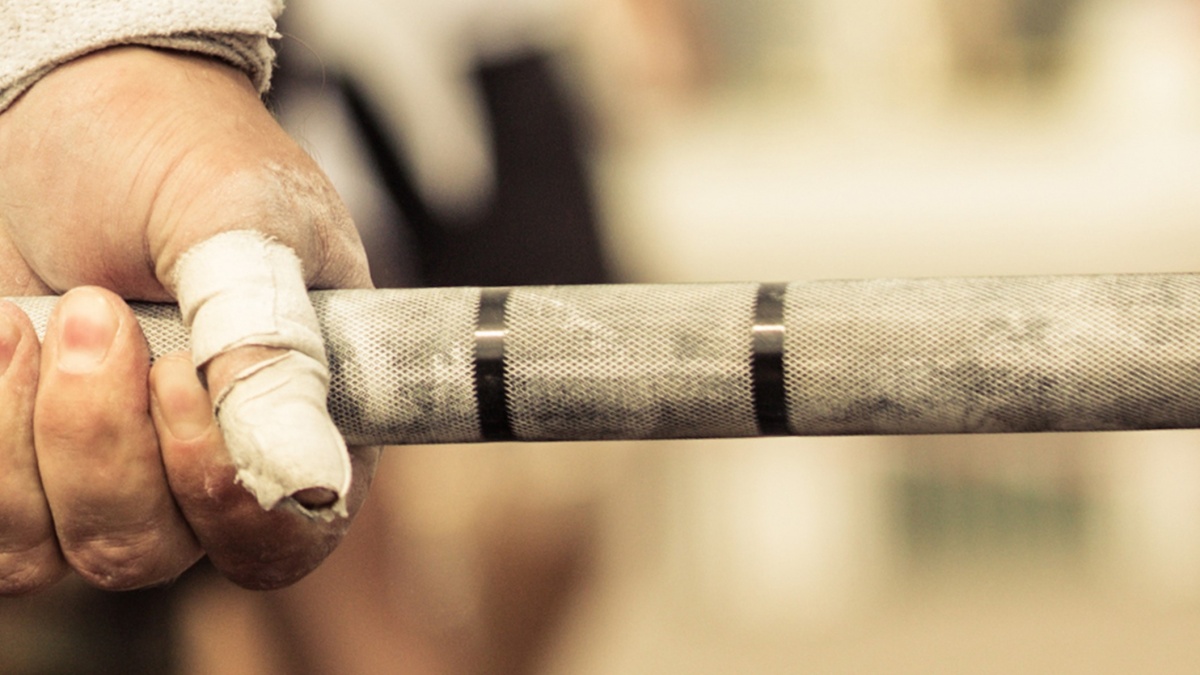
Halfway between the center of the bar and the ends are 1/4″ gaps in the knurling. Their only purpose is to help you consistently place your hands, whether directly on a ring or some distance away.
On IPF bars the marks are placed at the outer limit of where you can place one of your fingers for bench pressing. On IWF certified bars the marks are a little farther out, to mark a typical grip width for snatches.
When you’re doing a variety of exercises, it’s nice to have both marks so you can make sure your hands are at the right spot no matter what you’re doing and you aren’t left with several inches of distance that you’re forced to eyeball. Particularly at max attempts or in competitions it’s important to have a symmetrical grip so only a minimum amount of your strength goes towards stabilizing the bar.
Moderate Whip
At least a little whip is important for cleans, but you really don’t want it for back squats, bench presses, or overhead presses. This rules out the stiffest of the popular bars like the Texas Power Bar and Rogue Ohio Power Bar.
Medium Knurling
The knurling will need to be light enough to be tolerable if you expect to crank out a lot of reps for a WOD or just regular high rep training on cleans. Your hands sliding over and over on a deeply-knurled bar will be uncomfortable and might leave your palms ripped open for weeks if you really go for it.
This translates ideally to either deep hill knurling or light volcano knurling, and definitely not mountain peak knurling.
Many manufacturers for years have described their bars as “medium” knurling. They just say that by default. I’m not relying on that. I’m going by reported user experiences – and sometimes my own experience – with various bars, or clear macro images of the knurling.
190,000+ PSI
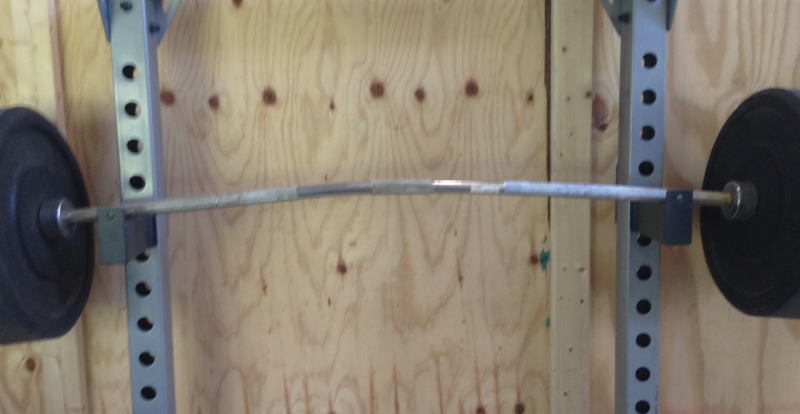
This is the tensile strength of the steel. Any good bar will have a PSI rating of at least 160,000, and for several years a lot of bars have been engineered to have over 190,000 and even over 200,000 and still maintain some whip because of the composition of the steel.
The bar needs to last through heavy drops from cleans and snatches and also hold up to being dropped on a rack. Racks can damage bars, and if the force is severe enough there’s nothing you can do, but a good strong bar will take a certain amount of punishment. So let’s go with 190,000 PSI minimum.
28 to 28.5mm Shaft Diameter
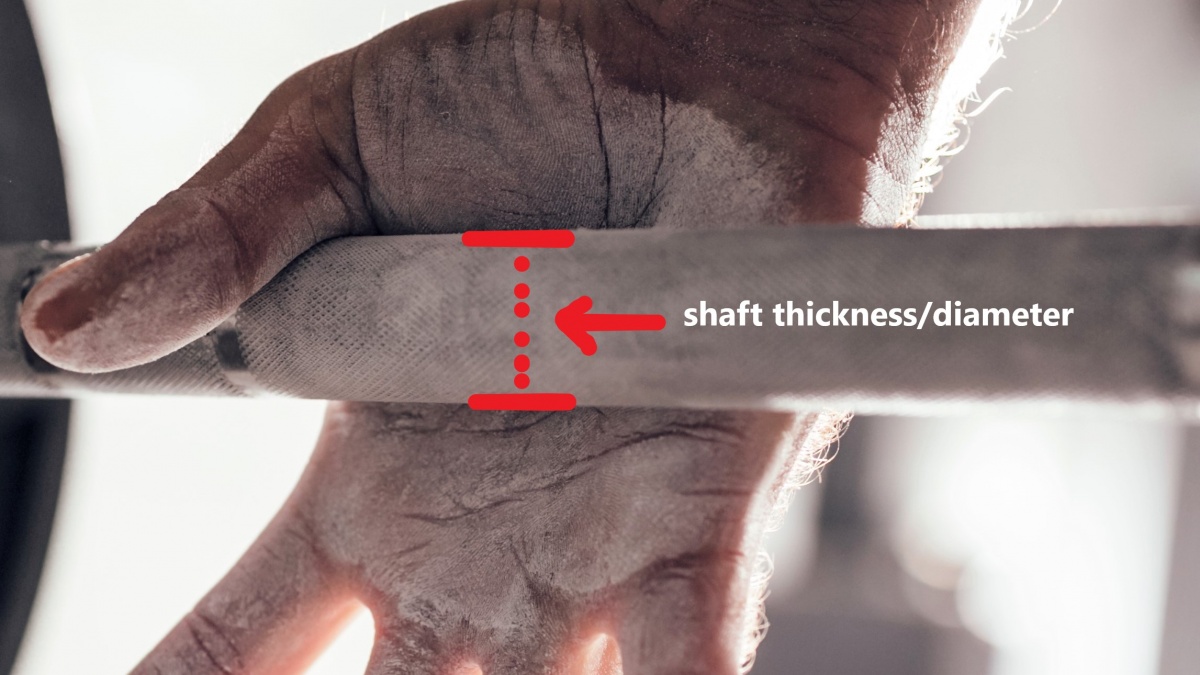
Your grip is usually the first thing to go when you do heavy deadlifts. A thicker shaft will make it a lot harder to keep your grip, forcing you to use chalk or straps on lighter weight.
To accommodate both pulling and pressing exercises, it’s best to have a 28mm or 28.5mm shaft.
Knurling All the Way to the Collars
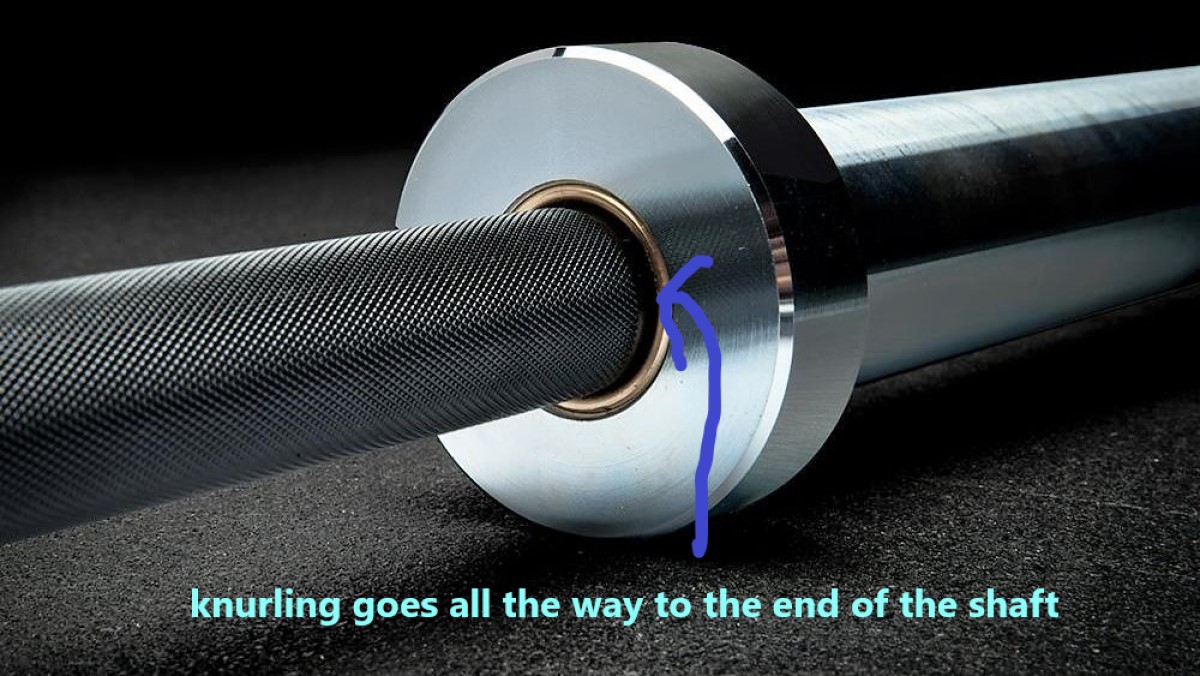
Heck yeah. We all love this. Not because we actually use it. The thing is, it’s not mandatory for most of us; more of a nice touch. Enough bars have this nowadays that the bar has been raised (sorry, last time I use that pun).
Functionally this is important for that extra-wide snatch grip for really tall guys. Or large guys with a very wide grip on their back squat, and using a narrow rack. This detail is sure sign that the manufacturer has put effort into keeping up with the times and producing a high quality bar meeting today’s standards.
Bronze or Composite Bushings
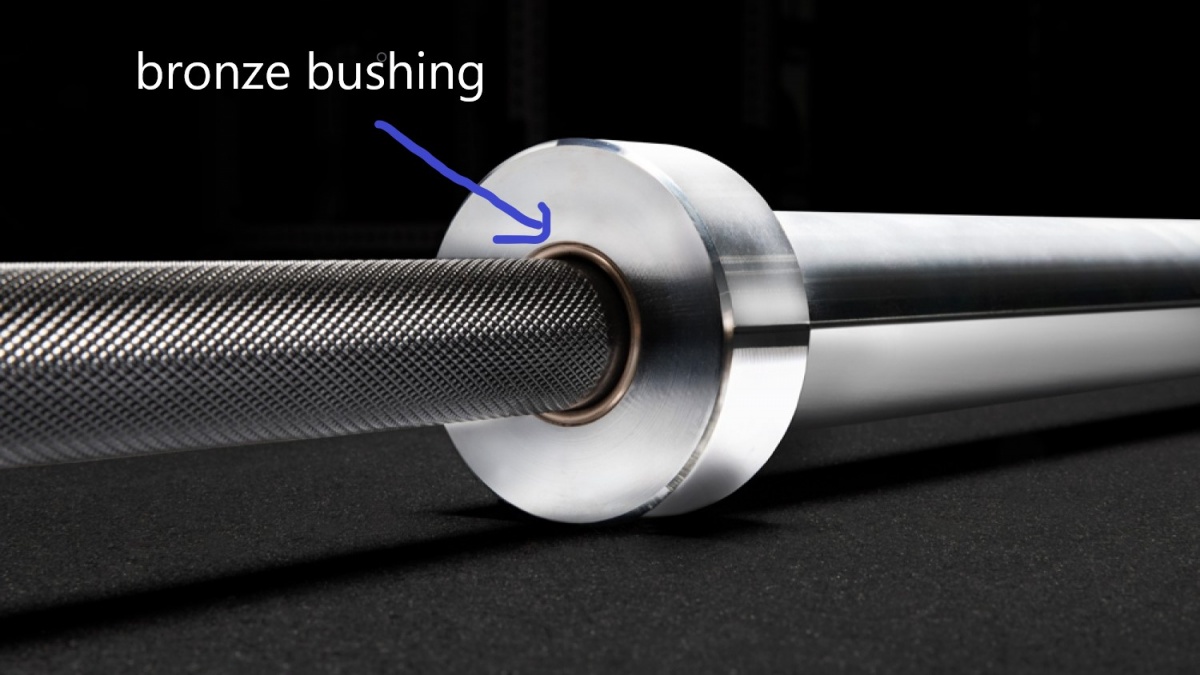
Bronze is so hard that it won’t ever wear down, stays sliding really smooth, and provides a low-friction spin against the steel sleeve. Lubrication helps the spin, but it isn’t strictly necessary. You can always spot the bronze bushing, as in the pic above.
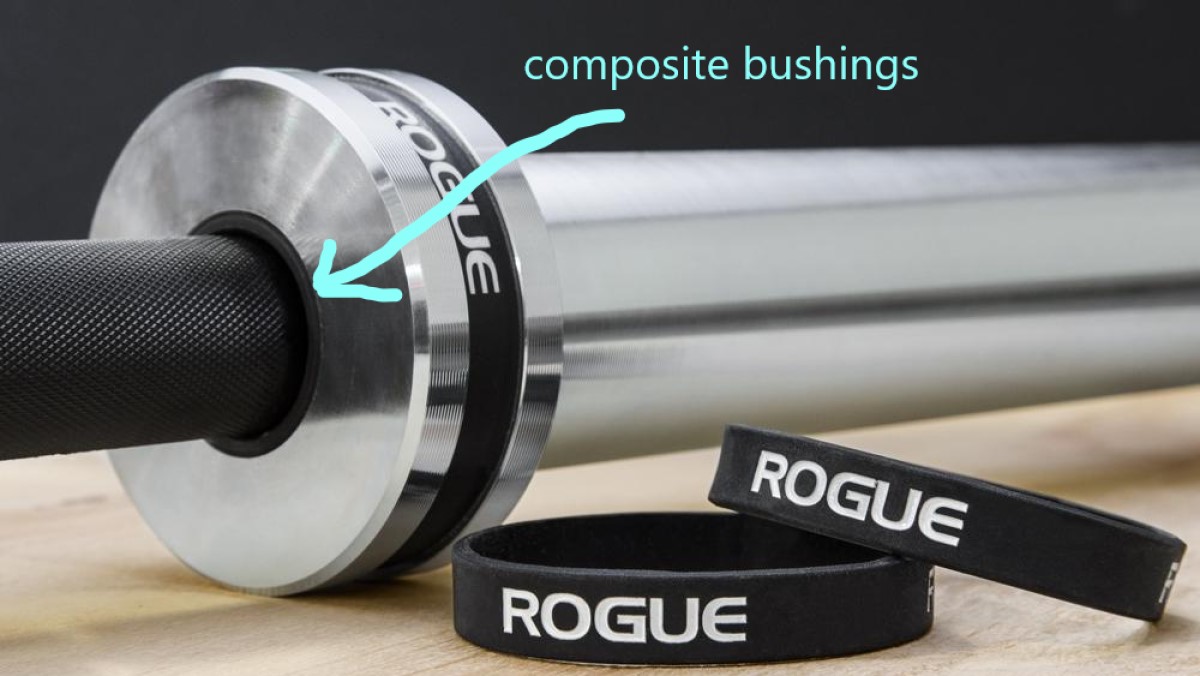
Composite bushings are a little cheaper to manufacture, they hold up very well without wearing down, won’t crack, they make less noise, and overall they work good. The problem is the friction coefficient of a plastic composite on steel is not as good as bronze on steel.
Composite bushings can spin as well as bronze if they are properly lubricated with oil. I mean, yeah, if you lubricate any material enough it will slide better. If you want to drip some oil in there and rotate it around to see if you can fully lubricate it well without making a mess, and repeat this process occasionally, go for it.
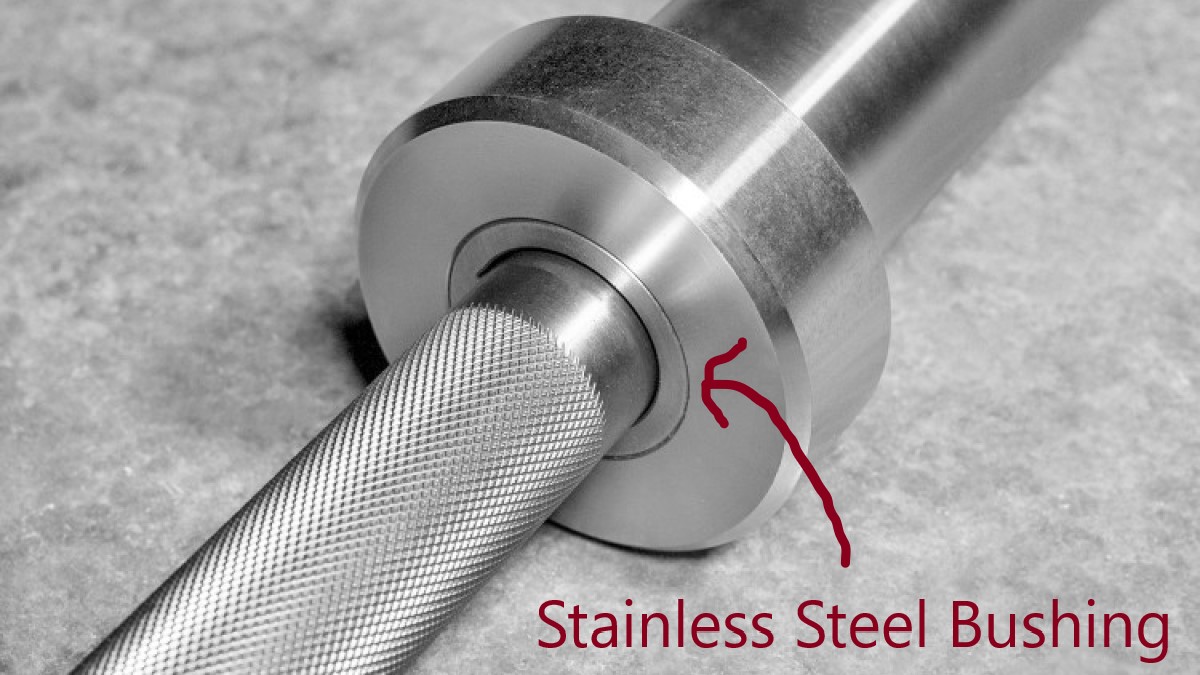
You’ll sometimes see steel bushings. Stainless steel is normally a good feature, like for the bar shaft, but steel-on-steel does not make for a good friction coefficient, no matter how much you polish them. It has to do with negative ions or something; I don’t know.
One application of steel bushings is for power bars. Powerlifters have a preference for a certain amount of spin. Too much spin just makes the bar harder to grip or balance. In this way, stainless steel bushings are not always a design flaw but are only the most appropriate for pure powerlifting bars.
Generally you don’t want a bar with the ultra-spinny needle bearings in the sleeves for an all-purpose bar. Lifters who are into the olympic lifts might like it because that’s what they’re used to. For most people it’s a little too much. The shaft wants to rotate on you at the slightest imbalance.
Under $350
If you have a thousand bucks to blow, you would probably be buying multiple bars. If you’re in the “I just need one” mindset, you probably have somewhat of a budget.
With that in mind, let’s keep the price under $350, a good round number. If you can’t handle that price tag, lower your expectations and see my article on the best olympic bar under $200.
Top Picks
Rep Fitness Excalibur Bar
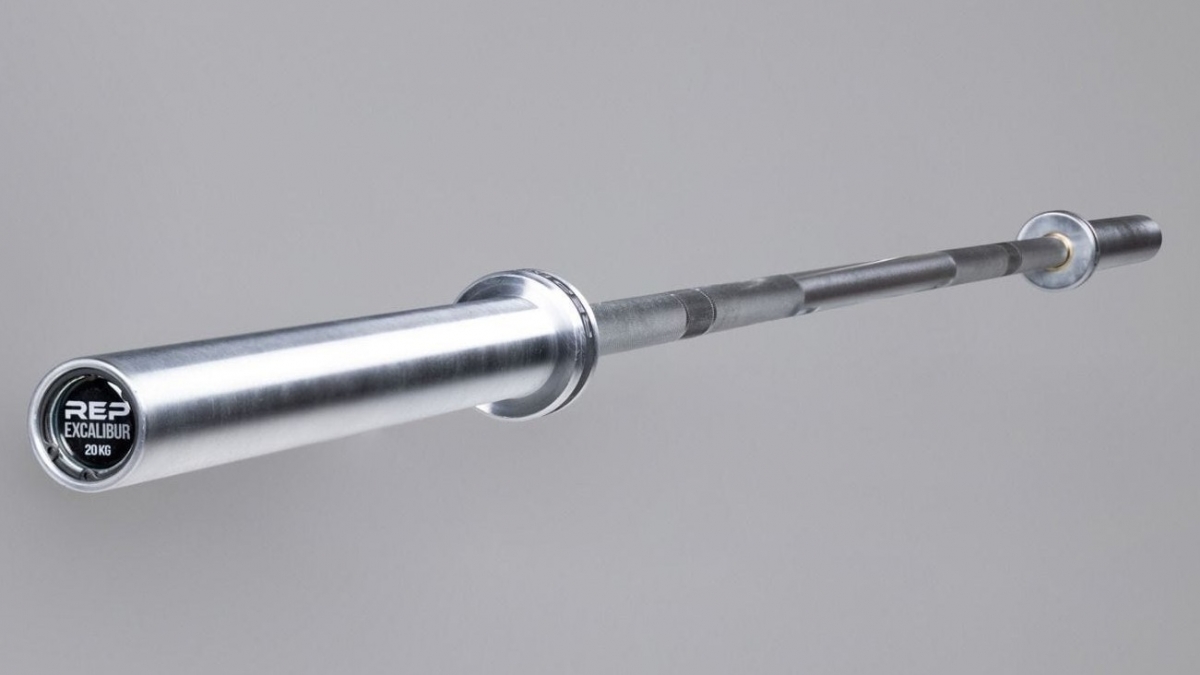
Price: $299.00 & free shipping, or $349.00 for stainless steel
The lowest-priced bar featured here, with free shipping to boot. The price is mainly because it’s made more inexpensively in China while the others are USA-made. The features and quality are still all there, depending on what exactly you want.
The volcano knurl isn’t cut as deeply as the Rogue Ohio Bar (further below), while it has about the same cut spacing as Rogue, resulting in a less aggressive feel.
On the downside, the only budget finish option they do is chrome. The stainless steel version carries a hefty price bump, but in this case it is still just under $350.
American Barbell California Bar
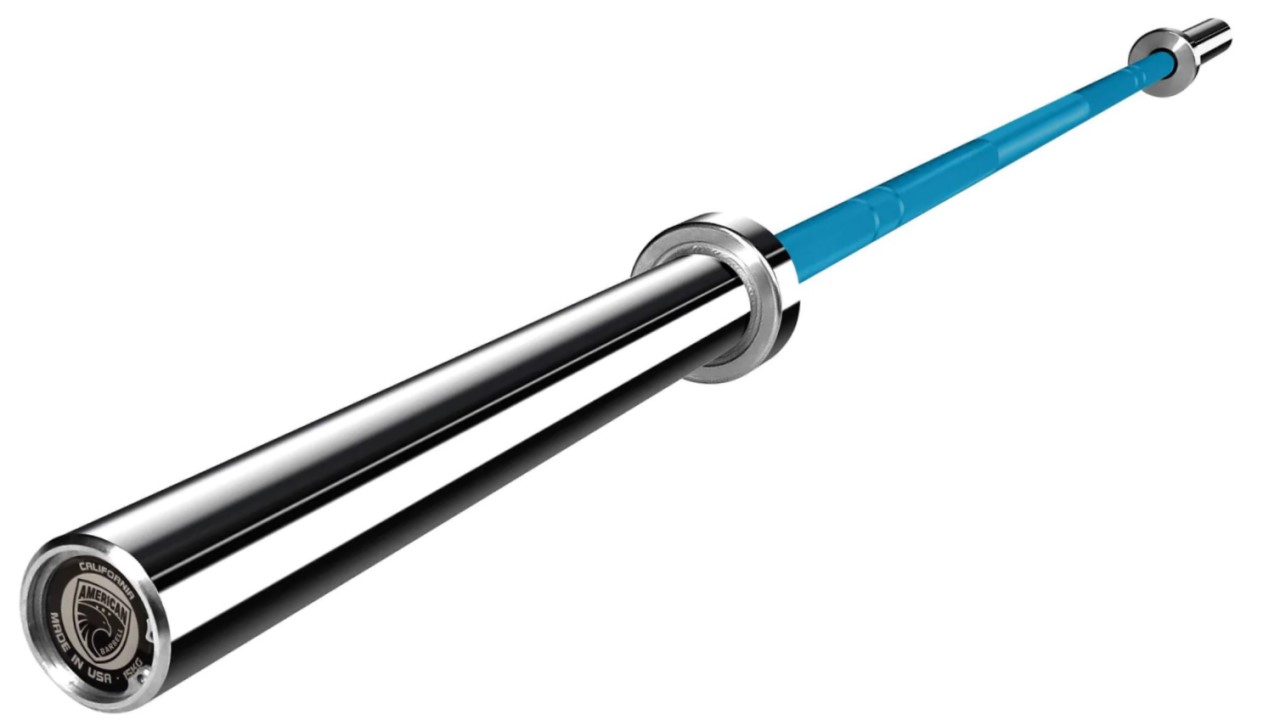
Price: $349.00 + shipping
American Barbell in 2017 was one of the first barbell companies – or possibly the very first – to offer a Cerakote finish, applying it to their existing California Bar. Since then the California Bar has remained their best-selling bar.
They cut the volcano knurl slightly finer than Rogue and Rep, which means the shaft feels nice and sticky without feeling as sharp or tearing your hands when they slide. This is one reason for the popularity of the California Bar. It might be the one for you if you’re concerned about knurl being too aggressive for high-rep workouts.
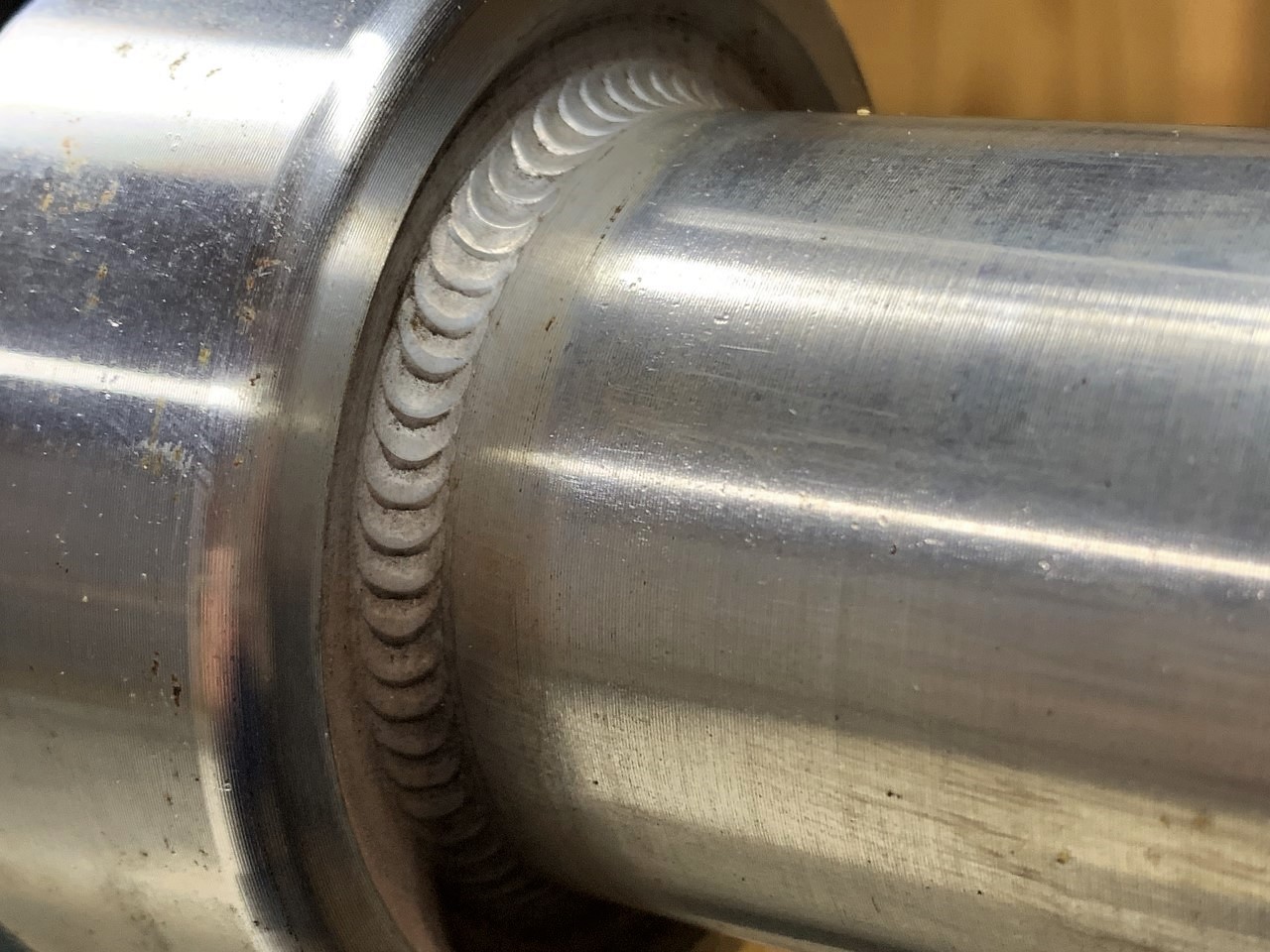
Another thing that stands out is the company’s beautiful signature welding of the sleeve to the shoulder like they do on all their bars. It’s as distinctive as the old spit-sleeve design was for York Barbell in the past. I’m no welder, but it looks great to me.
Finally, another reason they’re among the best is – like Rogue – they’re made in the USA!
Rogue Ohio Bar
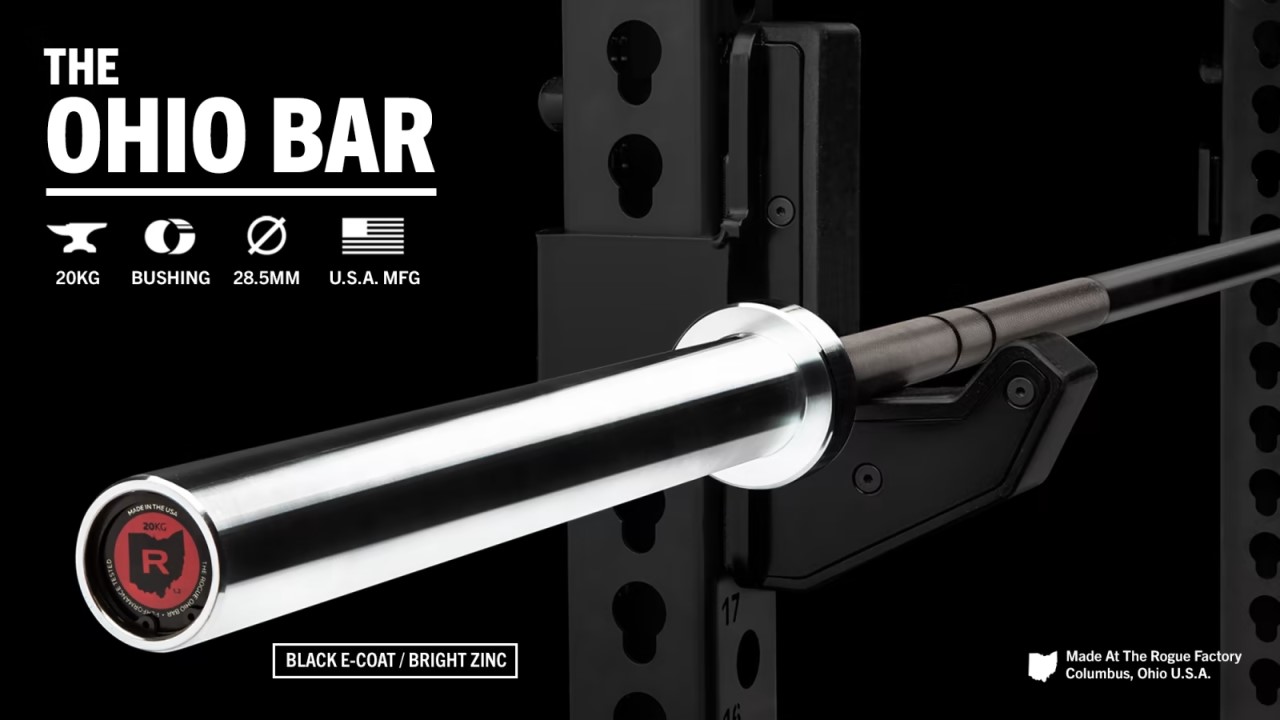
Price: $305-$350 + shipping, or $465 for the stainless steel version
The Ohio Bar was the first bar that Rogue manufactured at their facility in Ohio, and it still is. They kind of have to keep it around for nostalgia purposes no matter what. It’s arguably still the best of their all-purpose bars and remains popular.
At this point they have several variations of the Ohio Bar. They’re getting as much mileage out of the Ohio Bar name as possible! As of writing their finish options are e-coat, black oxide, black zinc, stainless steel, and a separately listed cerakote version. Don’t get too bogged down in the finish options. They all work. Stainless steel is the best feeling and resistant to rust but an expensive upgrade.
Speaking more of the Cerakote option, Rogue has a slick customizer tool to take a custom image for the bar shaft and custom text on the sleeves.
Out of the bars featured here, the Rogue Ohio Bar knurl is on the more aggressive side, while not as aggressive as many power bars like the Ohio Power Bar.
I’ve gotten questions on the Rogue Bar 2.0. The short answer is that the Ohio Bar has the slightly better bronze bushings and more finish options. I did a complete comparison of the Ohio Bar and Rogue 2.0 bar here.
Also, if you’re ok with some cosmetic blemishes from production, Rogue sometimes has “Boneyard” bars in their closeouts. The 28.5mm one is the Ohio Bar.
Did I miss any bar that should be included here? Leave a comment!

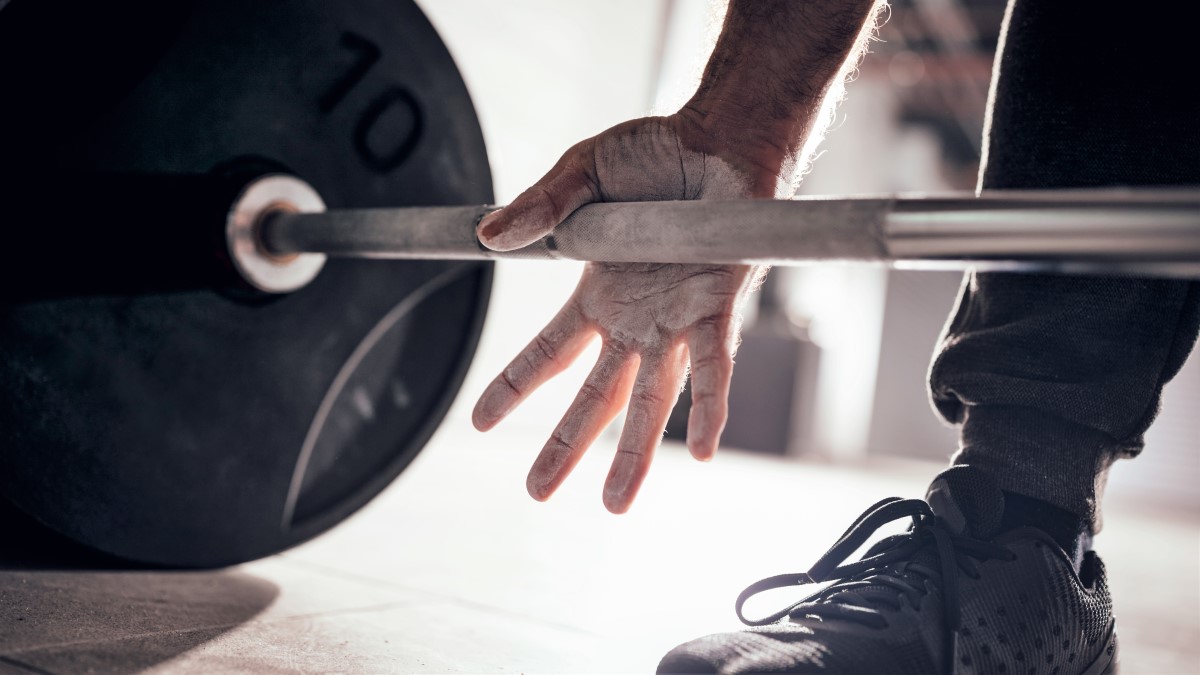
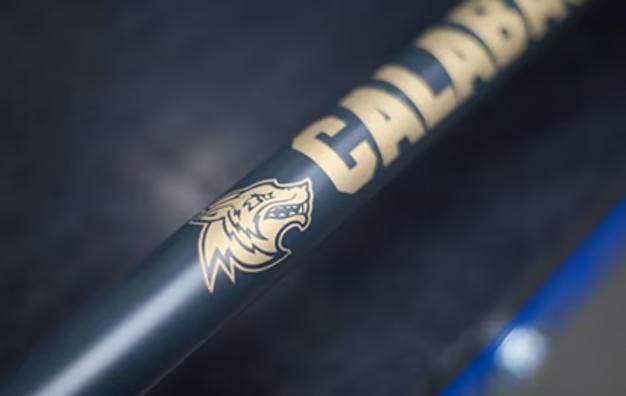
The ISF Power Bar is a 29mm aggressive knurling beast of a bar.
Sale price
$239.99
I was considering the ISF power bar as my new power bar a few months ago. I determined it probably had a tad too aggressive knurl for my taste! But I should add it to this page https://www.tworepcave.com/416/the-best-deep-bite-powerlifting-bars-ohio-power-bar-and-others/
The knurl is aggressive no doubt and that’s why I stopped using it for my deadlifts but it was well worth the money. I love it.
I think that Vulcan standard has better sintered oilite bronze bushings than most if not all the bars listed. The build quality is outstanding and lifetime warranted for use in commercial gym/Cross fit boxes and made in USA.. Can’t hardly beat that in my book.
Yep, the Vulcan Standard a good one! The only one listed here made in the USA. Thanks for your comments!
for the price the B&R bar can’t be beat
http://www.roguefitness.com/rogue-29mm-burgener-rippetoe-bar-2-0
That one has gotten great reviews for years! Wasn’t it the first bar ever to have the dual IWF-IPF marks? I can’t remember how the original differed in the specs. It was branded as the York B&R bar, while this one has York’s name removed entirely. I THINK what happened is Rogue, when they were still a new company, went through York to get it produced originally, and after Rogue started making all their own bars in-house they were like, screw that, we’re making this one too! One reason I didn’t include it here is it’s 29mm and really stiff, so people who incorporate some olympic lifting aren’t going to get quite as much out of it.
Have you tried the California Bar by American barbell? I’ll either get the Ohio bar or California bar. I’m not sure which at this point.
http://americanbarbell.com/products/california-bar
I haven’t tried it. It mostly looks like a great bar, but from what I’ve seen the bars with those black composite bushings just can’t spin as well as on brass bushings like the Ohio. Something to do with the friction, even though they’re all lubricated. I guess it’s the same reason that higher quality cable machines (lat pulldowns, etc) use steel pulleys instead of plastic for a smoother pull. So the California Bar is a lot like the Rogue Bar 2.0.